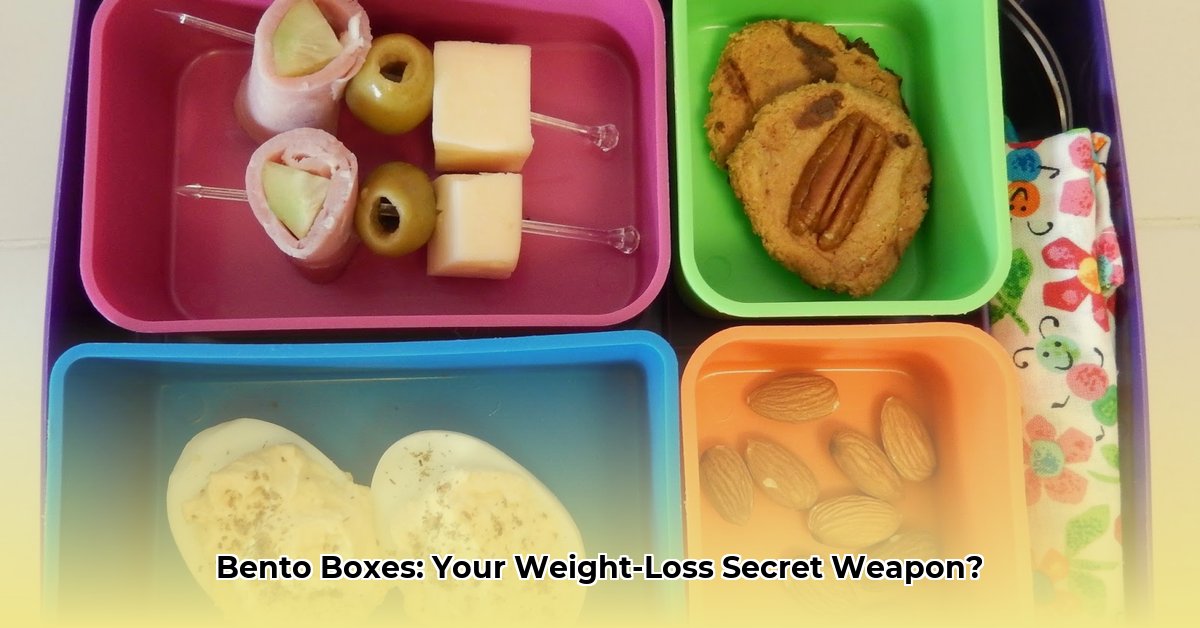
Are you tired of restrictive diets and looking for a fun, sustainable way to manage your weight? Bento boxes offer a delicious and effective solution! This isn't about deprivation; it's about creating balanced, satisfying meals that support your weight loss goals. This guide will show you how to pack delicious, high-protein bento boxes that keep you full and energized, leading to a healthier, happier you. Ready to ditch the diet struggles and embrace a new way of eating? Let's begin!
Building Your Weight-Loss Bento Box: A Step-by-Step Guide
The secret to bento box success for weight loss lies in mindful portioning and nutrient-dense choices. By visually dividing your meal, you create awareness of what you're eating, preventing overconsumption. Each section contributes to your overall health and weight management targets. But how do you craft the perfect weight-loss bento box? Let’s break it down:
Understanding the Fundamentals
Before diving into recipes, let's establish the core principles for creating effective weight-loss bento boxes:
Portion Control is Paramount: Bento boxes provide an excellent visual tool for portion control. Knowing exactly how much you're eating helps you manage your calorie intake effectively. What's the most important thing to remember about portion control? Consistency is key!
Nutrient Density is Key: Prioritize foods packed with nutrients per calorie. This means focusing on lean proteins, fiber-rich vegetables, healthy fats, and whole grains. These foods will keep you feeling full and satisfied for longer, reducing cravings and unnecessary snacking. What’s a simple way to increase nutrient density in your bento boxes? Add colorful vegetables to every meal!
Balance is Everything: A balanced approach to macronutrients (protein, carbohydrates, and healthy fats) is crucial. Aim for a mix that supports your energy levels and keeps you feeling satisfied. How do you find the right macronutrient balance? Consulting a registered dietitian is highly recommended.
Crafting Your Personalized Bento Box: A 5-Step Process
Step 1: Calculate Your Caloric Needs. The first step is determining your daily caloric needs for weight loss. Use an online calculator or consult a registered dietitian to get a personalized number. This number will guide your portion sizes. What's a common mistake people make when starting a weight loss journey? Underestimating their daily caloric needs.
Step 2: Plan Your Macronutrient Ratio. Once you know your daily calorie goal, divide it into the three macronutrient categories: protein, carbohydrates, and fats. A higher protein intake is generally recommended to promote satiety and preserve muscle mass. What's a recommended macronutrient ratio for weight loss? This varies depending on individual needs and should be determined in conjunction with a nutrition professional.
Step 3: Select Nutrient-Rich Foods. Fill your bento box with whole, unprocessed foods. Choose lean protein sources (chicken breast, fish, beans, lentils), whole grains (brown rice, quinoa), a rainbow of vegetables, and healthy fats (avocado, nuts, seeds). What's the best way to stay motivated with healthy eating? Finding recipes you genuinely enjoy and that fit within your calorie goals.
Step 4: Master Portion Control (Using the Bento Box!). This is where the bento box truly shines. Each compartment represents a predetermined portion size, based on your calculated needs. Consistency is key! What's a simple tip to improve portion control? Measure your food using measuring cups and spoons until you get a feel for appropriate serving sizes.
Step 5: Embrace the Power of Variety. To ensure you stick with your weight loss plan, keep things interesting! Experiment with different recipes, flavors, and combinations of foods. This will also ensure you're getting a wide range of essential nutrients. What's the secret to long-term weight management? Finding a sustainable eating pattern adapted to your individual preferences and lifestyle.
Delicious Bento Box Recipes to Inspire You
The following are sample bento box meal plans. Remember, these are starting points; adjust portion sizes to match your individual caloric needs and preferences.
Bento Box A (Approx. 450 Calories):
- Compartment 1: 4 oz grilled chicken breast (lean protein)
- Compartment 2: 1 cup mixed greens with a light vinaigrette (fiber and vitamins)
- Compartment 3: ½ cup steamed broccoli (fiber and nutrients)
- Compartment 4: ½ cup strawberries (antioxidants and natural sweetness)
Bento Box B (Approx. 400 Calories):
- Compartment 1: ½ cup quinoa (complete protein and fiber)
- Compartment 2: 1 cup roasted chickpeas (protein and fiber)
- Compartment 3: ½ avocado (healthy fats)
- Compartment 4: 1 small apple (fiber and natural sweetness)
Bento Box C (Approx. 500 Calories):
- Compartment 1: 3 oz baked salmon (healthy fats and omega-3s)
- Compartment 2: ½ cup brown rice (complex carbohydrates)
- Compartment 3: ½ cup steamed asparagus (vitamins and fiber)
- Compartment 4: ¼ cup almonds (healthy fats and protein)
Beyond the Bento Box: A Holistic Approach
While bento boxes are a valuable tool, they are part of a broader healthy lifestyle. Combine your bento box meal prepping with regular exercise, mindful eating, and stress management techniques. Consistency is key—focus on small, achievable changes and celebrate your progress! Remember, you’ve got this!
Remember to consult a registered dietitian or healthcare professional for personalized advice tailored to your specific needs and health conditions.